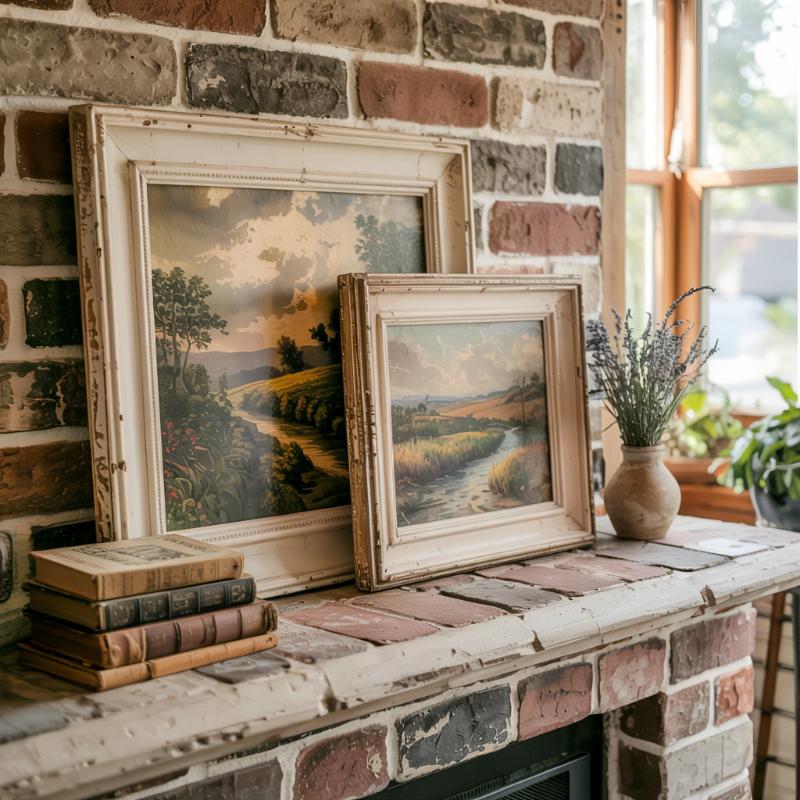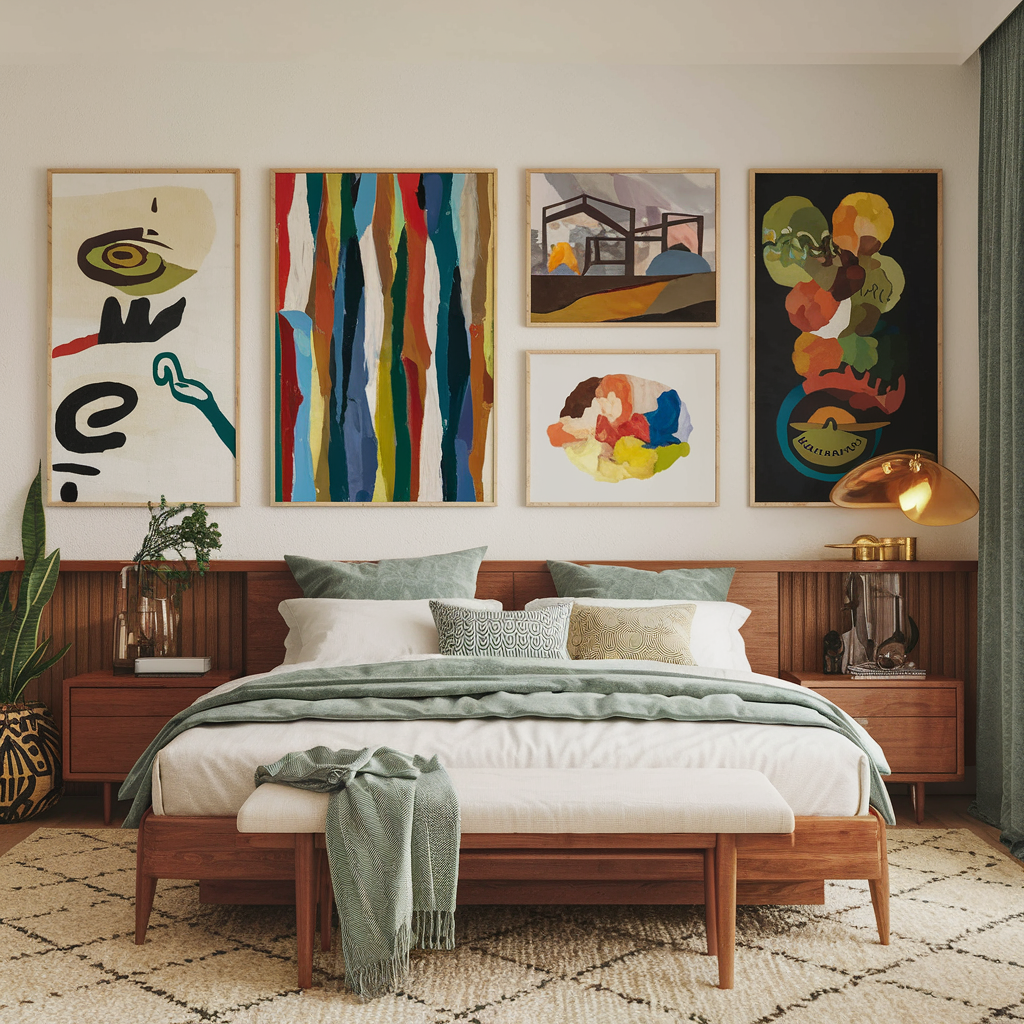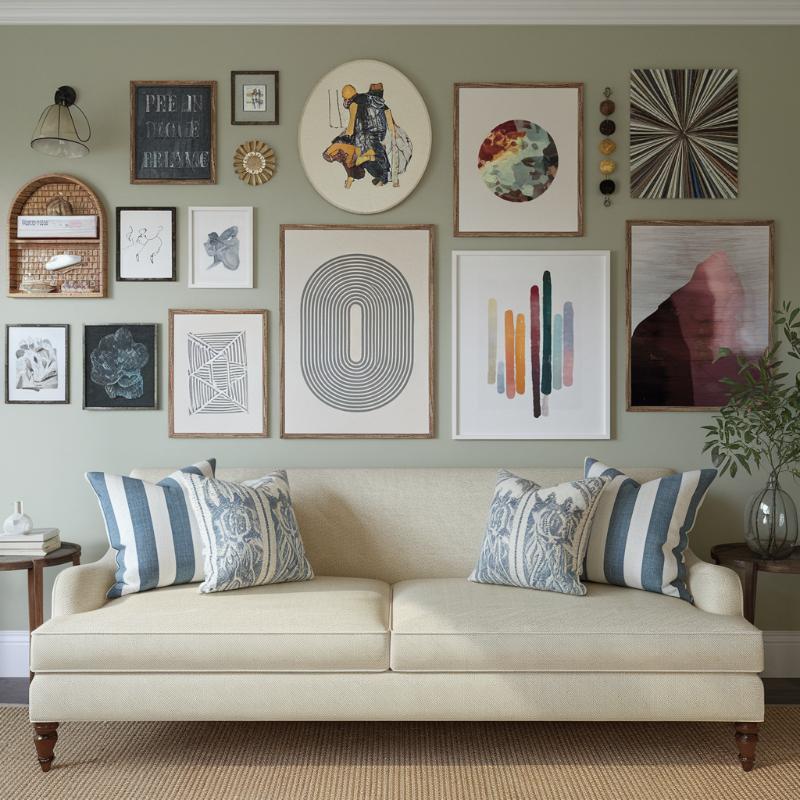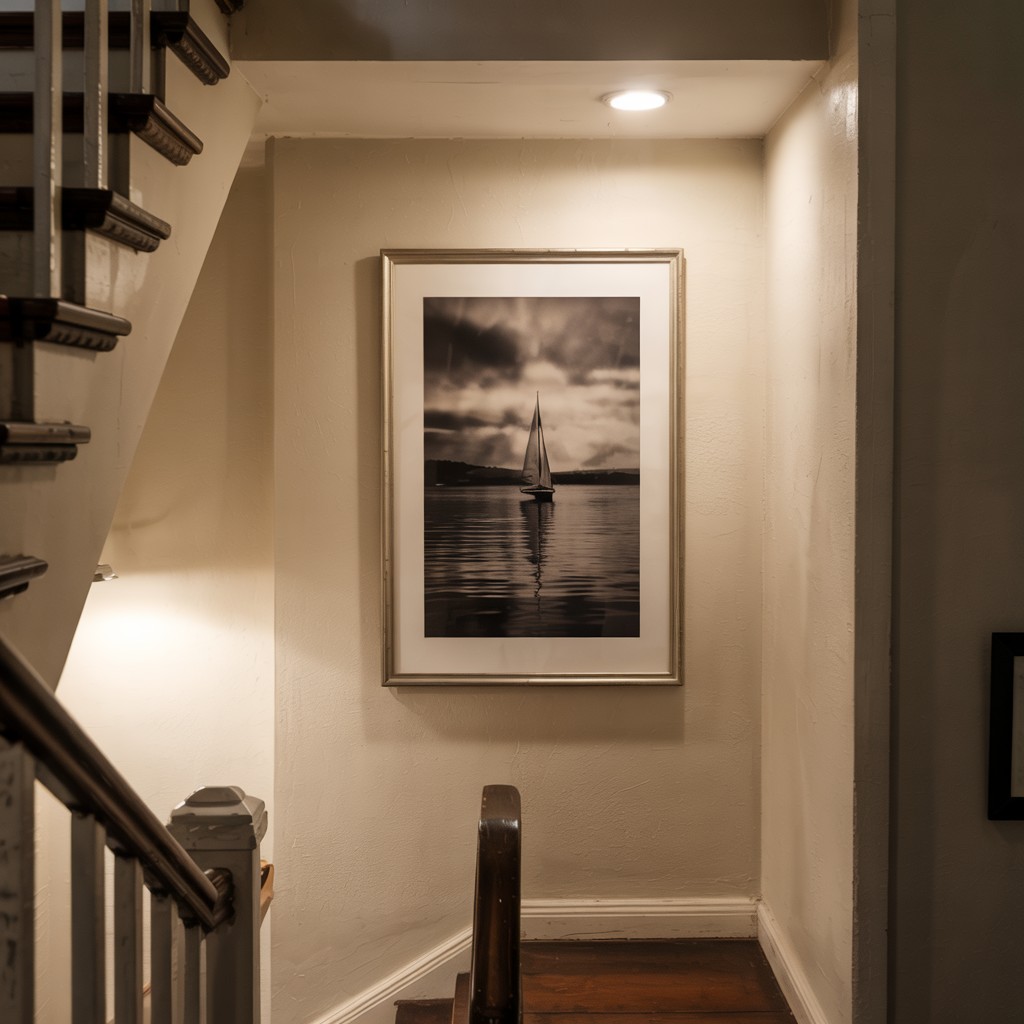Surprise! Wall Art Does Not Have To Be Hung On The Wall
Who says wall art has to be hung?
Propping artwork on shelves, mantels, or furniture gives you a versatile and dynamic way to show off your pieces while keeping your walls pristine. Plus, it makes switching up your decor as easy as rearranging a few items—no patching or repainting required.
Start by placing a single piece of artwork on a shelf, console table, or mantel for an understated, minimalist look. A large framed print or canvas leaning against the wall can make a bold statement on its own. Pair it with a small vase, plant, or sculpture to create a simple vignette that draws the eye without feeling cluttered.
For a more layered look, try grouping multiple pieces of wall art together. When propping art, don’t limit yourself to placing items side by side—overlap them slightly to add depth and a sense of cohesion. For example, lean a larger frame toward the back and place a smaller frame or canvas in front of it, letting them overlap just enough to catch the eye. This layering effect works beautifully with various sizes, textures, and frame styles, giving your display a collected and curated feel.
Shelves and mantels aren’t your only options. Dressers, sideboards, and even the floor can become showcases for your favorite art. A tall, oversized piece propped on the floor in a corner can anchor the space and add a touch of drama. Combine this with a smaller piece leaning on a nearby side table for a visually connected arrangement.
The beauty of this approach is its flexibility. If you tire of the arrangement, it’s easy to move things around, add new pieces, or take some away. Whether you’re propping a single masterpiece or creating a layered gallery-style display, this no-hanging-required method makes styling your space fun, creative, and refreshingly low-commitment.
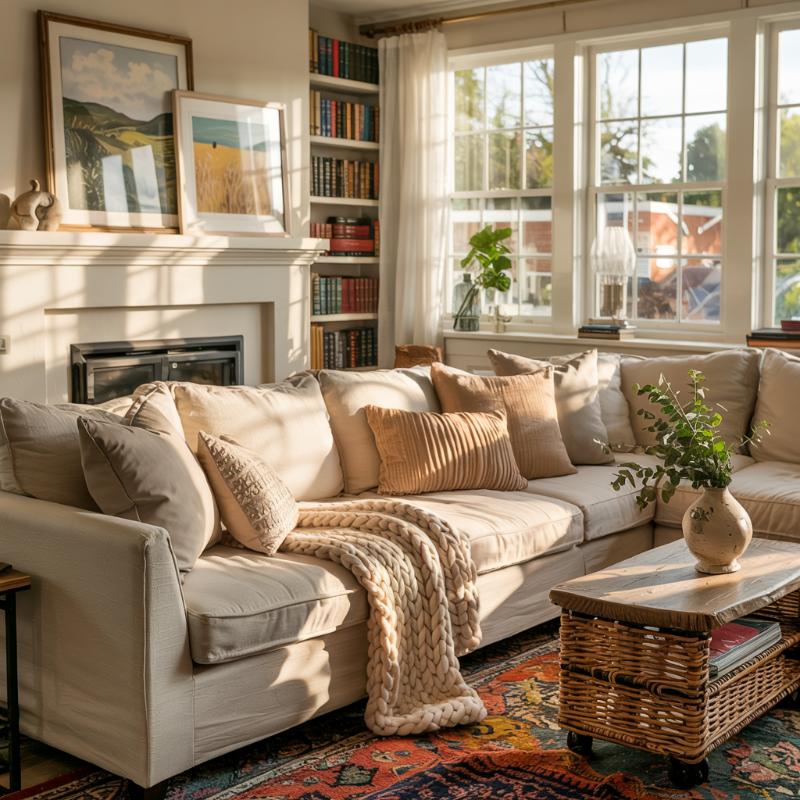
Why Propping WALL ART Works: Benefits of Leaning Wall Art
✔ No Hardware Required – Skip the nails, screws, and wall anchors—no drilling or patching needed!
✔ Perfect for Renters – A damage-free way to decorate without worrying about wall repairs.
✔ Easily Rearranged – Move pieces around whenever you want a fresh look—no commitment required.
✔ Great for Layering Multiple Pieces – Overlapping frames creates depth and allows you to display more artwork in a small space.
✔ Ideal for Heavy Artwork – No need to worry about securely mounting large, heavy frames—just lean them against the wall.
✔ Adds a Relaxed, Effortless Look – Creates a casual, curated feel that’s inviting and stylish.
✔ Maximizes Unused Spaces – Works in overlooked spots like mantels, console tables, dressers, and even the floor.
✔ Encourages Creativity – Experiment with different placements, mix and match styles, and update your display anytime.
✔ Blends Seamlessly with Other Decor – Pairs beautifully with books, plants, and decorative objects for a well-styled look.
✔ Safe for Delicate or Priceless Pieces – Avoids the risk of damage from improper hanging or falling off the wall.
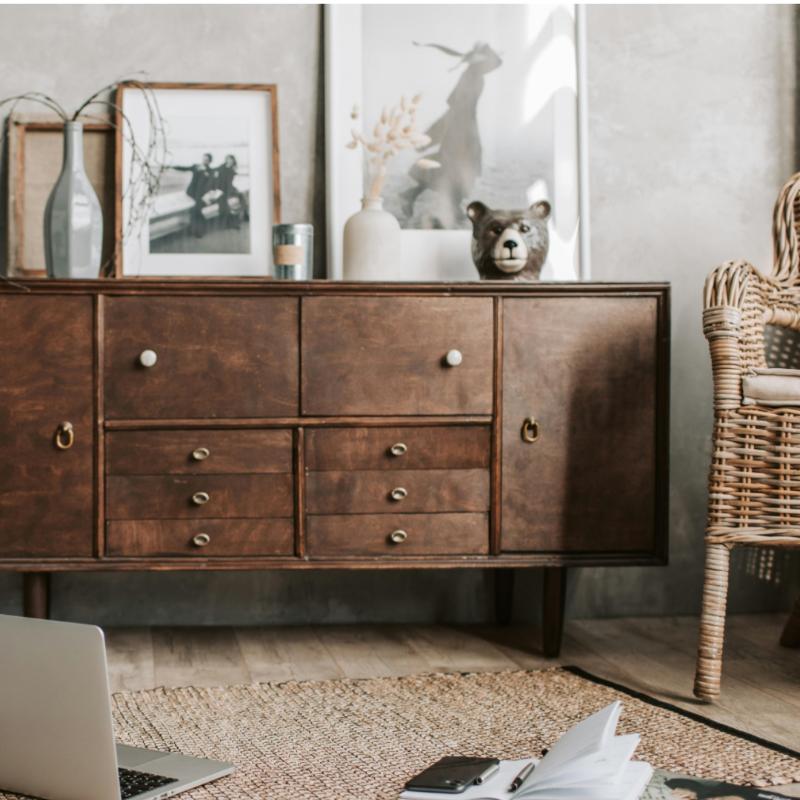
BEST PLACES TO PROP WALL ART, PICTURES, AND MIRRORS
- Console and entryway tables
- Dressers
- Wall shelves
- Bookshelf units
- Mantels
- Countertops
- Windowsills
- Bathroom vanities
- Accent tables
- Sideboards
- Floor leaning against the wall
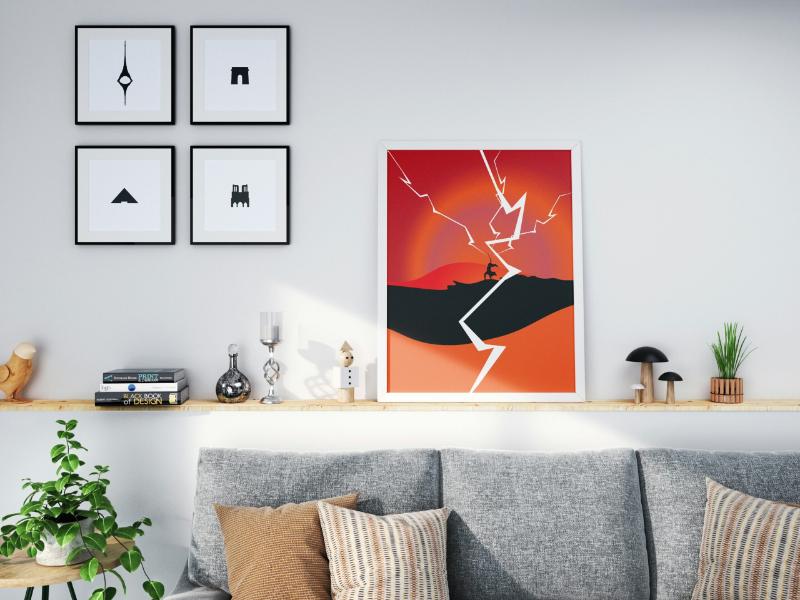
GUIDELINES FOR PROPPING, LEANING, AND LAYERING WALL ART
✔ Use Single Piece or Layer Multiple Pieces – Try placing a single framed print or canvas for a minimalist look, or layer multiple pieces by overlapping them slightly for depth.
✔ Prop Large Oversized Pieces on the Floor – Large pictures and mirrors can be propped on the floor against a wall, in a corner, or near furniture like a bench or sideboard for a bold, effortless look.
✔ Anchor Floor-Propped Artwork – If leaning a piece on the floor, position it near furniture (such as a dresser, bench, or sideboard) so it feels deliberately placed, rather than left unfinished.
✔ Size of the Artwork and Pictures – The artwork or picture should look proportional to the shelf, mantel, or furniture it rests on.
✔ Avoid Artwork That Is Too Big for the Space – Artwork should not extend beyond the surface it sits on. It should not be so big that it overwhelms the furniture or shelf on which it sits. And it should not be so tall that it nearly touches the ceiling or feels “squeezed” into the space.
✔ Small Pictures or Artwork – If a picture or piece of wall art feels too small on its own to lean on a table, consider combining it with other larger pieces and layering them with the small piece in the front, slightly overlapping them to create a larger visual presence.
✔ Balance with Other Décor – Pair leaning artwork with books, vases, candles, sculptures, etc. Balance propped up pictures on one side with other similar height items on the other side.
✔ Avoid a Cluttered Look – Using other décor like books, vases, candles, etc. to balance propped artwork on a shelf or piece of furniture is a great idea; but be careful to not overcrowd the surface space or furniture piece. Leave some free/negative space.
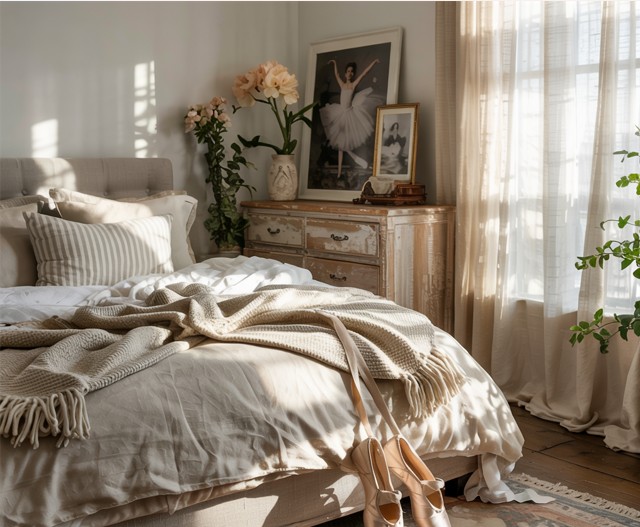
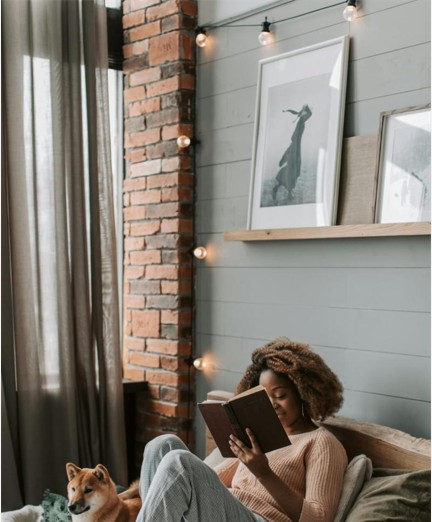
**visit the Inspiration Gallery for MORE WALL ART DISPLAY AND HANGING ideas and inspiration!**
Be sure to check out these posts in the Beginner’s Guide to Wall Art series:

